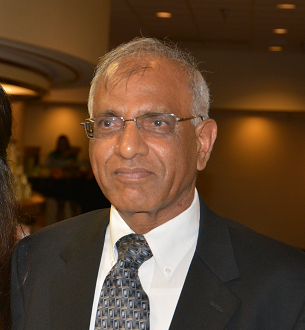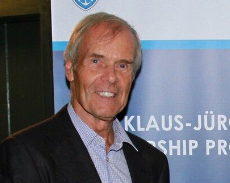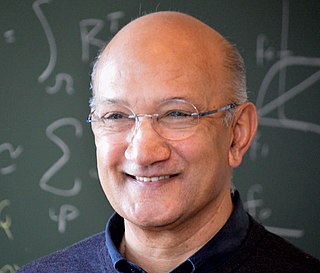A discrete element method (DEM), also called a distinct element method, is any of a family of numerical methods for computing the motion and effect of a large number of small particles. Though DEM is very closely related to molecular dynamics, the method is generally distinguished by its inclusion of rotational degrees-of-freedom as well as stateful contact and often complicated geometries. With advances in computing power and numerical algorithms for nearest neighbor sorting, it has become possible to numerically simulate millions of particles on a single processor. Today DEM is becoming widely accepted as an effective method of addressing engineering problems in granular and discontinuous materials, especially in granular flows, powder mechanics, and rock mechanics. DEM has been extended into the Extended Discrete Element Method taking heat transfer, chemical reaction and coupling to CFD and FEM into account.

Computational physics is the study and implementation of numerical analysis to solve problems in physics. Historically, computational physics was the first application of modern computers in science, and is now a subset of computational science. It is sometimes regarded as a subdiscipline of theoretical physics, but others consider it an intermediate branch between theoretical and experimental physics - an area of study which supplements both theory and experiment.
Computational science, also known as scientific computing, technical computing or scientific computation (SC), is an area of science that uses advanced computing capabilities to understand and solve complex physical problems. This includes
Romesh C. Batra is a University Distinguished Professor and Clifton C. Garvin Professor of Engineering Science and Mechanics at Virginia Polytechnic Institute and State University, Blacksburg, Virginia. He was born in Village Dherowal, Punjab, India. His family migrated from Dherowal to Shahabad Markanda, Haryana, India after India became an independent country. Dr. Batra has authored the book, Elements of Continuum Mechanics, AIAA Educational Series. His research group has published in reputable refereed and widely read journals more than 460 papers of which about 40 are single-authored and nearly 320 have two authors; these are documented on the website: http://www.beam.vt.edu/batra.
Computational mechanics is the discipline concerned with the use of computational methods to study phenomena governed by the principles of mechanics. Before the emergence of computational science as a "third way" besides theoretical and experimental sciences, computational mechanics was widely considered to be a sub-discipline of applied mechanics. It is now considered to be a sub-discipline within computational science.
Olgierd Cecil Zienkiewicz was a British academic of Polish descent, mathematician, and civil engineer. He was born in Caterham, England. He was one of the early pioneers of the finite element method. Since his first paper in 1947 dealing with numerical approximation to the stress analysis of dams, he published nearly 600 papers and wrote or edited more than 25 books.

Allen Taflove was a full professor in the Department of Electrical and Computer Engineering of Northwestern's McCormick School of Engineering, since 1988. Since 1972, he pioneered basic theoretical approaches, numerical algorithms, and applications of finite-difference time-domain (FDTD) computational solutions of Maxwell's equations. He coined the descriptors "finite difference time domain" and "FDTD" in the 1980 paper, "Application of the finite-difference time-domain method to sinusoidal steady-state electromagnetic penetration problems." In 1990, he was the first person to be named a Fellow of the Institute of Electrical and Electronics Engineers (IEEE) in the FDTD area. Taflove was the recipient of the 2014 IEEE Electromagnetics Award with the following citation: "For contributions to the development and application of finite-difference time-domain (FDTD) solutions of Maxwell's equations across the electromagnetic spectrum." He was a Life Fellow of the IEEE and a Fellow of the Optical Society (OSA). His OSA Fellow citation reads: "For creating the finite-difference time-domain method for the numerical solution of Maxwell's equations, with crucial application to the growth and current state of the field of photonics."
Lloyd Nicholas Trefethen is an American mathematician, professor of numerical analysis and head of the Numerical Analysis Group at the Mathematical Institute, University of Oxford.

Johann Hadji Argyris FRS was a Greek pioneer of computer applications in science and engineering, among the creators of the finite element method (FEM), and lately Professor at the University of Stuttgart and Director of the Institute of Structural Mechanics and Dynamics in Aerospace Engineering.
J. Tinsley Oden is the Associate Vice President for Research, the Cockrell Family Regents' Chair in Engineering #2, the Peter O'Donnell, Jr. Centennial Chair in Computing Systems, a Professor of Aerospace Engineering and Engineering Mechanics, a Professor of Mathematics, and a Professor of Computer Science at The University of Texas at Austin. Oden has been listed as an ISI Highly Cited Author in Engineering by the ISI Web of Knowledge, Thomson Scientific Company.

Thomas Joseph Robert Hughes is a Professor of Aerospace Engineering and Engineering Mechanics and currently holds the Computational and Applied Mathematics Chair (III) at the Oden Institute at The University of Texas at Austin. Hughes has been listed as an ISI Highly Cited Author in Engineering by the ISI Web of Knowledge, Thomson Scientific Company.
Satya Atluri is an American engineer, educator, researcher and scientist in aerospace engineering, mechanical engineering and computational sciences, who is currently the Presidential Chair & University Distinguished Professor at Texas Tech University. Since 1966, he made fundamental contributions to the development of finite element methods, boundary element methods, Meshless Local Petrov-Galerkin (MLPG) methods, Fragile Points Methods (FPM), Local Variational Iteration Methods, for general problems of engineering, solid mechanics, fluid dynamics, heat transfer, flexoelectricity, ferromagnetics, gradient and nonlocal theories, nonlinear dynamics, shell theories, micromechanics of materials, structural integrity and damage tolerance, Orbital mechanics, Astrodynamics, etc.

Junuthula N. Reddy is a Distinguished Professor, Regent's Professor, and inaugural holder of the Oscar S. Wyatt Endowed Chair in Mechanical Engineering at Texas A&M University, College Station, Texas, USA.[1] He is an authoritative figure in the broad area of mechanics and one of the researchers responsible for the development of the Finite Element Method (FEM). He has made significant seminal contributions in the areas of finite element method, plate theory, solid mechanics, variational methods, mechanics of composites, functionally graded materials, fracture mechanics, plasticity, biomechanics, classical and non-Newtonian fluid mechanics, and applied functional analysis. Reddy has over 620 journal papers and 20 books and has given numerous national and international talks. He served as a member of the International Advisory Committee at ICTACEM, in 2001 and keynote addressing in 2014.[2][3]

Computational Mechanics is a monthly scientific journal focused on computational mechanics. It is published by Springer and was founded in 1986. The journal reports original research in computational mechanics. It focuses on areas that involve the rational application of mechanics, mathematics, and numerical methods in the practice of modern engineering.

Klaus-Jürgen Bathe is a civil engineer, professor of mechanical engineering at the Massachusetts Institute of Technology, and founder of ADINA R&D, who specializes in computational mechanics. Bathe is considered to be one of the pioneers in the field of finite element analysis and its applications.
Cognitive Computation is an international, peer-reviewed scientific journal, interdisciplinary journal that publishes articles describing original basic and applied work involving bio-inspired computational accounts of all aspects of natural and artificial cognitive systems. The journal is published by Springer Science+Business Media.

Ernest Hinton was a British civil engineer and engineering professor. He was born in Liverpool, England in 1946 and was educated at University of Wales Swansea. After receiving the BSc (1967), MSc (1968) and PhD (1971) at Swansea he joined the faculty of the Department of Civil Engineering where served until his death in 1999.
Hans Petter Langtangen was a Norwegian scientist trained in mechanics and scientific computing. Langtangen was the director of the Centre for Biomedical Computing, a Norwegian Center of Excellence hosted by Simula Research Laboratory. He was a professor of scientific computing at the University of Oslo, and was editor-in-chief of SIAM Journal on Scientific Computing 2011–2015.

Batmanathan Dayanand Reddy is a South African scientist. He is Professor Emeritus and interim Vice Chancellor at the University of Cape Town. Reddy holds the South African Research Chair in Computational and Applied Mechanics, and is the Director of the Center for Research in Computational and Applied Mechanics (CERECAM) there. From 2018 - 2021, he was the inaugural president of the International Science Council.

Somnath Ghosh is the Michael G. Callas Chair Professor in the Department of Civil & Systems Engineering and a Professor of Mechanical Engineering and Materials Science & Engineering at Johns Hopkins University (JHU). He is the founding director of the JHU Center for Integrated Structure-Materials Modeling and Simulation (CISMMS) and was the director of an Air Force Center of Excellence in Integrated Materials Modeling (CEIMM). Prior to his appointment at JHU, Ghosh was the John B. Nordholt Professor of Mechanical Engineering and Materials Science & Engineering at Ohio State University. He is a fellow of several professional societies, including the American Association for the Advancement of Science (AAAS).









